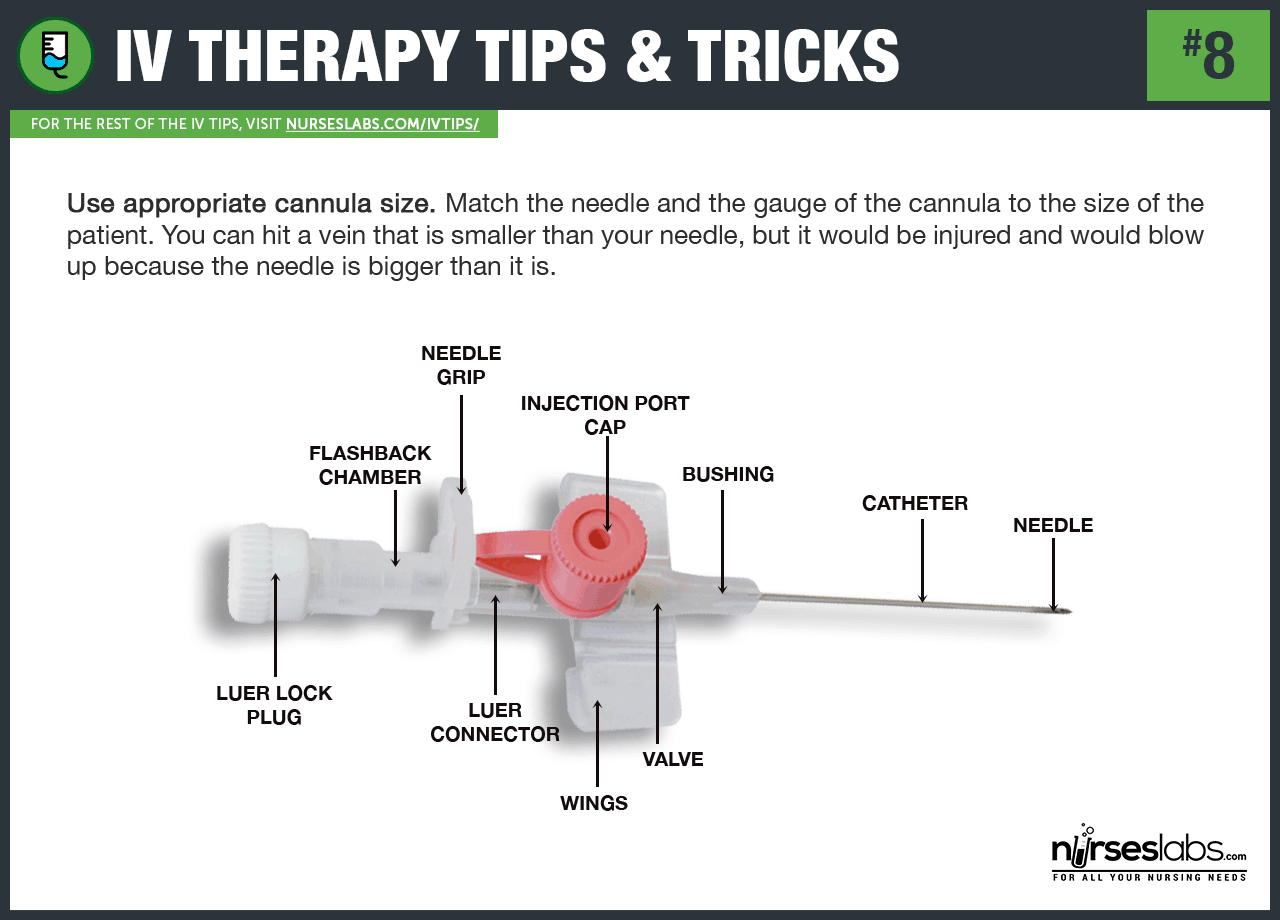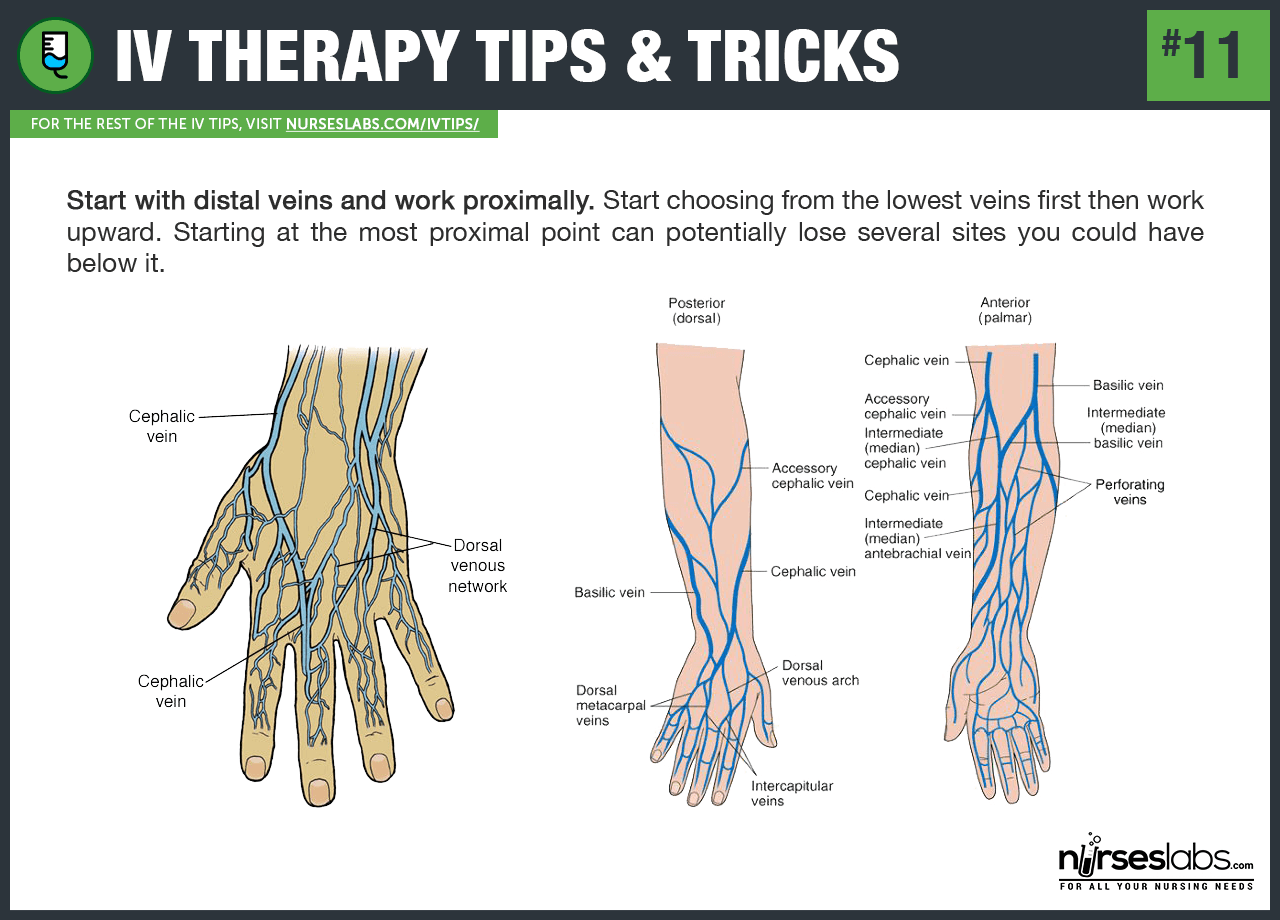The following are best intravenous or IV therapy tips and tricks for nurses who would want to master this essential nursing skill. Intravenous (IV) insertion may
be one of the basics skills a nurse would learn, but it could be one of
the most difficult to master if you lack the practice and the
confidence to do it. Most of the sharpshooters have gained their skill
through continuous practice and plenty of experiences in this field.
A lot of factors may affect the way you insert an intravenous catheter,
but you have to control them and bend them to your convenience. Never
rush on any nursing skills that you still not have, or take a shortcut
just to achieve your goals. Along with these intravenous therapy tips, nursing practices must be accurate, precise, and learned not only by the brain but most especially by the heart.
3. Assess for needle phobia. Needle phobia is a response as a result of previous IV insertions. Symptoms include tachycardia and hypertension before insertion. On insertion bradycardia and a drop in blood pressure
occurs with signs and symptoms of pallor, diaphoresis, and syncope.
Reassure the patient with a soothing tone, educating the patient,
keeping needles out of sight until the last minute before use, and use
of topical anesthetics can help manage needle phobia
Read More Here:
https://doctoryg.blogspot.com/2019/03/50-iv-therapy-tips-and-tricks-how-to.html
1. Stay calm and be prepared. Hitting
the bullseye on one try will depend on the nurse’s preparation and
skill. You and your patient should be composed as a nervous and rushed
procedure will likely result in failure. Allay anxiety by
explaining the procedure to the patient and determine the patient’s
history with IV therapy. Ensure the patient is comfortable and
sufficiently warm to prevent vasoconstriction.
2. Exude confidence. Believe
in yourself and reassure the patient you know what you’re doing. The
patient will be encouraged by your confidence and you too, of course.
4. Observe Infection control measures. Use
gloves in inserting a cannula into the patient. Intravenous insertion
is an invasive procedure and requires aseptic technique and proper
infection control measures. Wipe a cotton swab or alcohol pad on the
insertion site to minimize microorganisms in the area and also to
visualize the chosen vein more clearly.
5. Assess the vein. Before
inserting a needle into a patient’s vein, you have to assess its
condition first. A well-hydrated person has firm, supple, and
easy-to-reach veins. Well-hydrated veins are bouncy, making them the
right fit for insertion. Some patients need intravenous therapy but are
dehydrated, so it is a challenge to
hit the vein in one go. To avoid injuring the vein, always assess first
that you are aiming for a vein that is not frail enough to blow up
during the insertion. Take your time. The following tips can help you
with that.
6. Feel rather than look. If
you can’t see a suitable vein, trust your fingers even more than your
eyes. It’s also an excellent opportunity to familiarize yourself with a
suitable vein. A tendon may feel like a vein but palpating it through a
range of motion may prove that it is not.
7. Ask your patient. The patient may know more which veins are suitable based on his previous IV history.
8. Use an appropriate cannula size. Match
the needle and the gauge of the cannula to the size of the patient. The
gauge refers to the diameter of the lumen of the needle or cannula —
the smaller the gauge number, the larger the diameter of the lumen, the
larger the gauge number, the smaller the diameter of the lumen. You can
hit a vein that is smaller than your needle, but it would be injured and
would blow up because the needle is bigger than it is.
https://doctoryg.blogspot.com/2019/03/50-iv-therapy-tips-and-tricks-how-to.html


No comments:
Post a Comment